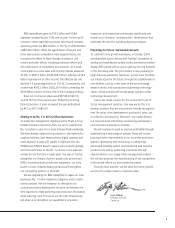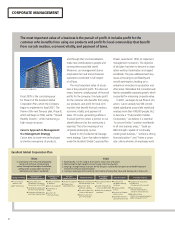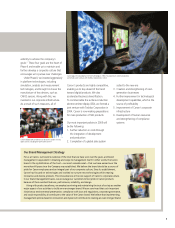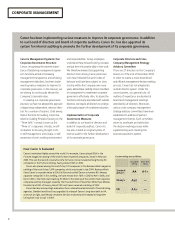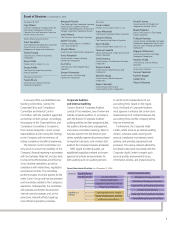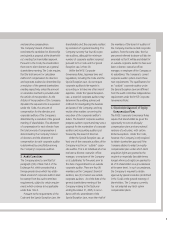Canon 2004 Annual Report Download - page 15
Download and view the complete annual report
Please find page 15 of the 2004 Canon annual report below. You can navigate through the pages in the report by either clicking on the pages listed below, or by using the keyword search tool below to find specific information within the annual report.
13
we believe we must relentlessly improve
quality and reduce costs by closely
coordinating product development,
production engineering technology, and
manufacturing technology to continue
to grow our operations.
One of the ways we are going about
doing this is by shifting the production of
parts and devices in-house. In addition to
CMOS sensors and other key parts and
key devices, we are moving to bring in-
house the production of manufacturing
equipment and molds. In 2004, through
the acquisition of Igari Mold Co., Ltd.,
which has state-of-the-art plastic injection
molding technology, we were able to
strengthen the Canon Group’s technolog-
ical capabilities in this area.
Cost Reduction through Coordination
of Development and Production
The first initiative directed at further cost
reduction is to introduce “prototype-less
design.” This will have a major positive
impact on costs. The prototype-less
design infrastructure will accelerate
sophisticated information sharing
between development and production,
thus advancing Canon’s drive toward
concurrent engineering. Through these
activities, we will be able not only to
eliminate the costs of building prototypes
and losses incurred in production start-up,
but also to reduce the lead times
required for introducing new products.
Reforms in Procurement
Canon’s second initiative is to reform
its procurement activities. Accordingly,
we are promoting such measures as
processes to reduce costs from the
development stage and consolidating
purchasing by means of unified
guidelines. Through the fair assessment
of suppliers and parts based on EQCD
(Environment, Quality, Cost, Delivery)
considerations and competition, we aim
to increase the number of outstanding
suppliers with high technological
capabilities. This will contribute to
improved quality, enabling us to move
closer to realizing our goal of an inspection-
free procurement process.
Automation of Assembly Operations
Canon’s third initiative is to reform its
production activities by working toward
full automation of assembly operations.
We have already begun specific initiatives
in this area. Canon operated automated
assembly systems at some plants,
including Oita Canon Materials, Inc.,
which manufactures toner cartridges.
For further improvement in this area,
Canon intends to shift to fully automated
and unmanned assembly systems.
We will be able to minimize costs and
prevent the outflow of Canon technology
by manufacturing equipment for these
fully automated assembly systems inter-
nally. For the development of next-gener-
ation production engineering technology,
Canon will concentrate its production
engineering technology- related divisions
in a center in Kawasaki.
Canon manufactures circuit boards.
Canon’s Worldwide Production Sites
An automated assembly system for toner cartridge production


